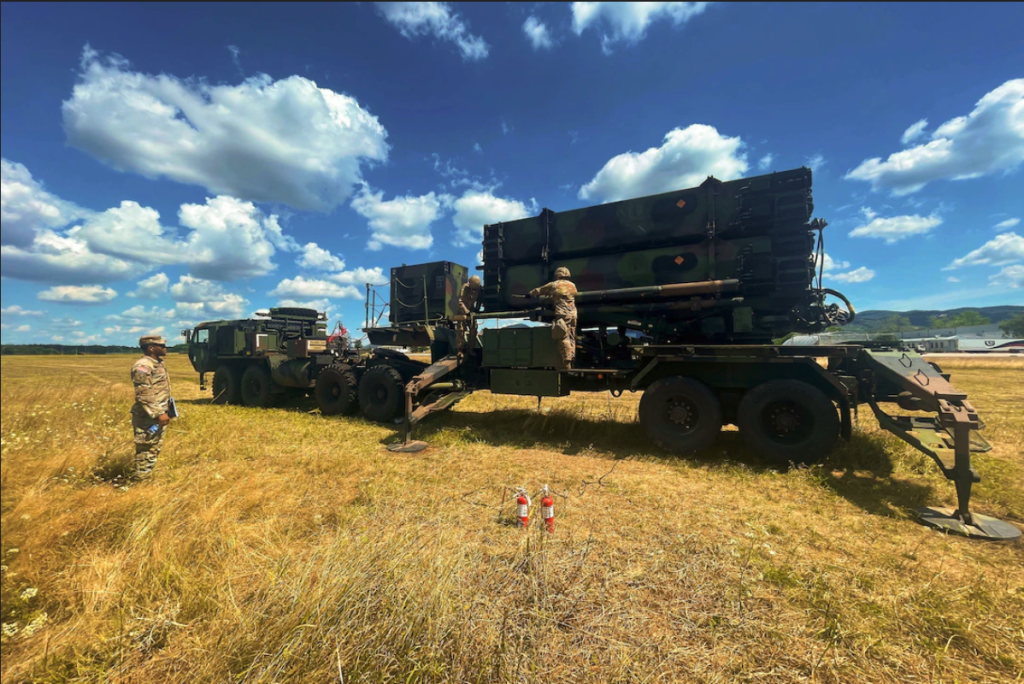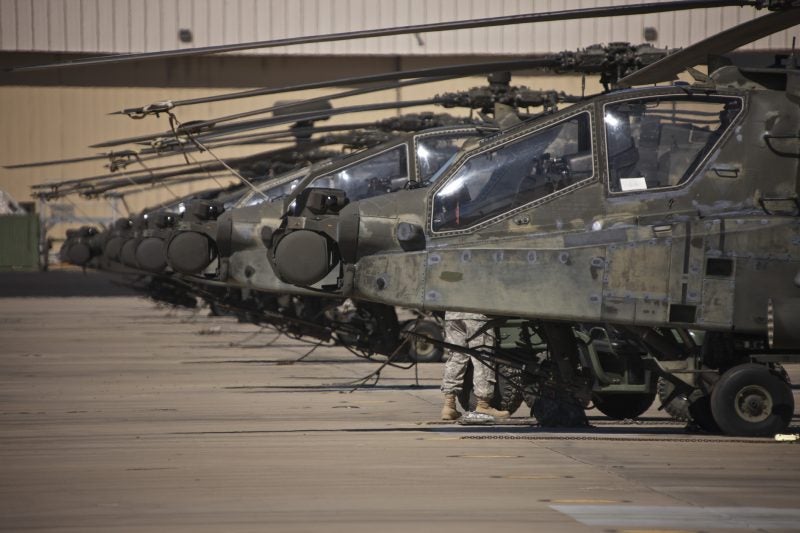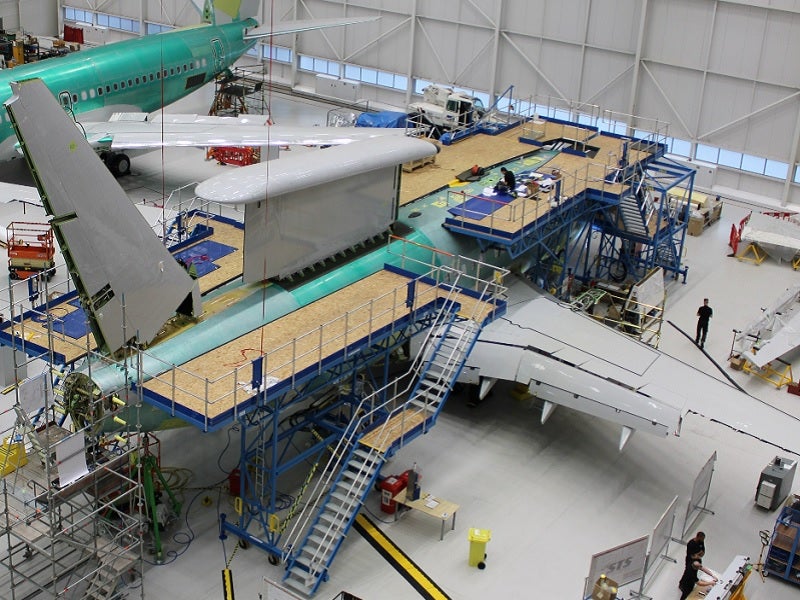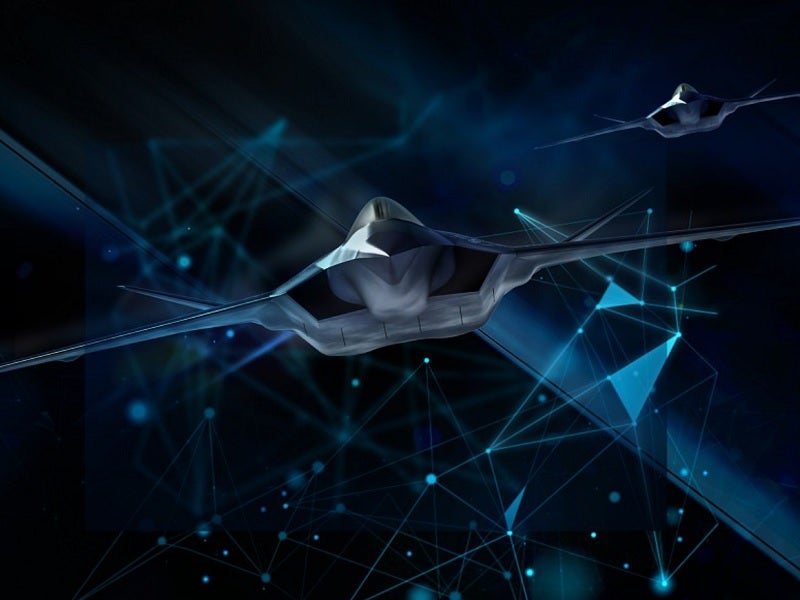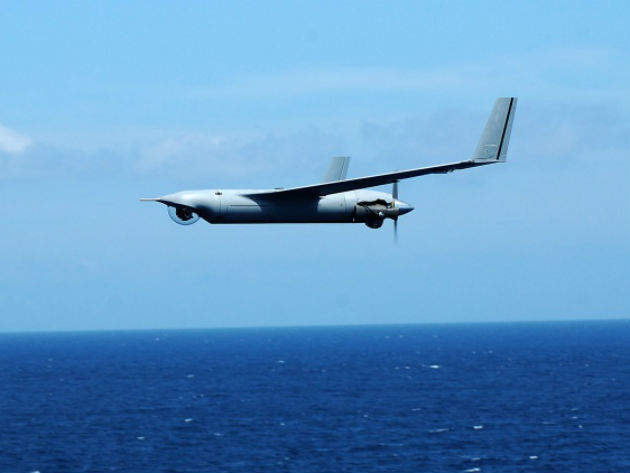

In November 2014, the Defense Advanced Research Projects Agency (DARPA) announced that it was seeking information from industry on how to expand the operational envelopes of smaller UAS by using existing military aircraft to transport multiple small UAS into the theatre of operations and launch them while airborne. This would overcome the shorter range and endurance of small UAS, enabling them to conduct ISR and related missions deep in enemy territory while reducing reliance on expensive manned aircraft and keeping their pilots out of harm's way.
DARPA plans to explore this idea by using available – or in-development – technology to transform existing aircraft, such as C-130 airlifters, into planes capable of launching and recovering small UAS. A request for information was released on 7 November seeking technical, security and business insights addressing the feasibility and potential value of such capabilities under the programme name Distributed Airborne Capabilities.
"We want to find ways to make smaller aircraft more effective, and one promising idea is enabling existing large aircraft, with minimal modification, to become 'aircraft carriers in the sky," said DARPA.
"We envision innovative launch and recovery concepts for new UAS designs that would couple with recent advances in small payload design and collaborative technologies."
Cooperative teaming
The idea of UAS operating cooperatively both with each other and with manned aircraft has been steadily gaining traction in the UAS community, and there is work being done that DARPA could tap into as it seeks enabling technologies.
At the 2014 Farnborough Air Show, BAE Systems showcased a concept it calls the Transformer. With the Transformer, BAE Systems proposes that future aircraft systems could be made up of smaller sub-aircraft that can operate as one or individually.
Such technology would allow the aircraft to travel together, increasing their flight range and saving time and fuel. Once threatened, the aircraft can split apart and act independently, with some tasked to perform surveillance while the lead aircraft drops vital supplies, before rejoining to return to base.
Revolutionary technology could for the first time see tactical UAVs pack a punch with mini precision-guided weapons.
In 2011 Boeing demonstrated swarm reconnaissance capabilities with a team of dissimilar UAS types in flight tests in Oregon. The demonstration saw two ScanEagle and one Procerus Unicorn from the Johns Hopkins University's Applied Physics Laboratory (JHU/APL) communicate in flight using a mobile ad hoc network and JHU/APL-developed swarm technology.
According to Boeing's report, the UAS worked together to search the test area through self-generating waypoints and terrain mapping, while simultaneously sending information to teams on the ground; showing that unmanned aircraft can collect and use data while communicating with each other to support a unified mission.
The following year, in August 2012, the same JHU/APL technology was used to demonstrate that an operator on the ground, using only a laptop and a military radio, could command a UAS swarm in this case two ScanEagle UAS. Boeing said that the technology essentially allows UAS to perform in a manner similar to a swarm of insects, "completing tasks more quickly and efficiently by communicating and acting together".
Manned and unmanned team up
The US Air Force Research Laboratory (ARFL) also has work underway that could lay the groundwork for a future concept of operations relying on these cooperating teaming capabilities among manned and unmanned aircraft and humans.
These capabilities are a point of focus in autonomous development, as captured in the ARFL's Autonomy Science & Technology (S&T) Strategy document, 'Intelligent machines seamlessly integrated with humans – maximizing mission performance in complex and contested environments.'
The goal of this work is machines and humans interacting to share information and improve mission performance; and it involves teaming, where entities have identified roles, responsibilities and capabilities within the mission.
Teaming has long been a part of US Air Force doctrine, assembling mission packages of manned aircraft with the right set of capabilities.
"The evolution of UAS opens up new possibilities," says Daryl Mayer, Wright-Patterson AFB spokesman. "Small ISR teams of UAS can now work together to more rapidly acquire key information on a target or perform multiple simultaneous tasks and provide that information to warfighter consumers.
"And leading-edge research is investigating manned-unmanned teaming in the tactical aircraft environment, augmenting manned aircraft with unmanned teammates for their sensing and offensive and defensive capabilities."
Key technologies required to achieve cooperative teaming start with the ability to fly safely, especially in proximity to other aircraft.
"In a tactical environment, the aircraft's ability to protect itself and those in its team through a variety of methods is critical," Mayer said.
"Communication between team mates to rapidly convey information is key to cooperative activities, but machine intelligence is also required to make sense of the mission environment and respond appropriately, with or without interactions with other human or machine teammates. Finally, tools and techniques to cost-effectively transition these complex software capabilities from requirements to certification are required."
The US Air Force maintains several portfolios of activities in cooperative teaming with associated roadmaps. The Automatic Ground Collision Avoidance System has already transitioned to the operation manned fighter fleet, and air collision avoidance is currently being flight tested. UAS Sense and Avoid is successfully transitioning out of S&T, but the air force continues to advance the integration of UAS into airspace operations through the Terminal Area Operations programme. The air force has also developed and evaluated small UAS ISR teams in various operational exercises and experiments.
The next steps in this area are improved identification and management of mission uncertainties and communication limitations. And while this autonomy functionality is matured, the human-machine interaction continues to be developed to ensure rapid sharing of state awareness and team goals.
The mechanics of launch and retrieval
The British Army’s next generation unmanned air system (UAS) – called Watchkeeper – is now fully operational in Afghanistan.
Whether deployed by a large aircraft such as a C-17 or C-130 or smaller, more agile aircraft, mechanical requirements for the reliable launch and recovery of UAS while in flight pertain to both the 'mothership' and the UAS.
"For some small UAS concepts, a delivery method is required to insert them into theatre due to their range limitations, and the requirements for this delivery platform would be the same as for delivering any other capability: range, payload, survivability and so on," the USAF source said. "There are overall cost/capability tradeoffs that do need to be better understood. For example, airborne launch can be relatively inexpensive, whereas airborne recovery likely cannot. If the UAS then have to be expendable, the cost implications are significant."
Early exploration into the feasibility of launching UAS from a larger aircraft was carried out under a NAVAIR concept demonstration programme in 2003. The programme was tasked with determining a flight envelope and launch system configuration that would allow a small, unpowered UAV glider (>80lbs) to be safely launched from the cargo ramp of a C-130 via a roll-on/roll-off pneumatic launch system. In addition to safe separation from the launch aircraft, the programme was also tasked with demonstrating that the UAV would remain stable enough following launch to deploy its wings and fly a pre-programmed flight path.
Flight tests were conducted by NAVAIR's Test and Evaluation Flight Test Department using the XPV/GL Hawkeye UAV.
According to the test report, "safe separation from the C-130 aircraft was demonstrated, as well as UAV stability for successful wings deployment and fly-out. The success of these flight tests opens the door for development of similar air launched systems that could be used for a myriad of applications."
Current development emerging in this area includes work by BAE Systems to develop a submarine-hunting drone capable of being launched by the US Navy's P-8A Poseidon maritime patrol aircraft. The drone in this case will be equipped with a magnetic anomaly detector (MAD) payload to detect submarines to compensate for the P-8A's lack of MAD instrumentation, but the technology could have wider application. The drone will likely be deployed by the P-8A's sonobuoy rotary launchers, three of which are able to deploy sonobuoys at altitude.
BAE System's work will possibly draw on that of its subsidiary, Advanced Ceramics Research, on Coyote, an air-launched drone developed for the US Navy's maritime surveillance requirements. The drone is packaged in a sonobuoy tube and dropped from the aircraft with a parachute, at which point it detaches from the tube, spreads its wings and flies.
Other launch aircraft that could be considered include smaller fast jets capable of deploying UAS; here again the challenge, beyond the mechanical aspect, remains the survivability of small UAS during the launch. Boeing is working on a concept that could see F/A-18 Super Hornets carry, deploy and control a compressed-carriage ScanEagle UAV in a canister. Carried on the wing and launched as a weapon, the UAS could be tasked with providing targeting information to the jet from a stand-off distance.
Information systems – it's going to be about data
Another area that will require significant focus beyond the launch aircraft and drones themselves are the information systems that sit underneath them.
Commenting on the information challenge when operating swarming UAS being used to deliver destructive effects David Livingstone MBE DSC, associate fellow for international security at Chatham House, said: "The question becomes one of how to manage the rules of engagement, which stipulate a man in the loop at all times. Command and control and human engagement is required to create a very controlled process in order to prevent collateral damage."
The bandwidth required to enable this will be significant, and further complicated by the lead time required to move the UAS into position via the launch vehicle.
"Not just to provide data to each member of the swarm, but to provide the latest update in terms of the battle picture – how do you manage that with 200 drones sitting in the back of a C-130 that each need updated targeting information?" he said. "That's a huge amount of bandwidth, and this is an issue facing all forms of manoeuvre warfare that is dependent on speed, agility, tempo and the highly mobile battlefield – it's going to be about data."

.gif)
